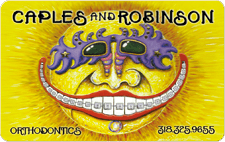
Are you going days, or even weeks, without cleaning your retainer? A retainer has the same bacteria as your mouth and, if not cleaned daily, is almost equivalent to not brushing your teeth for weeks. You accumulate bacteria throughout the day, which can lead to bad breath, gingivitis, and cavities. If you want to practice good oral hygiene, your orthodontist recommends following these tips.
Clean your retainer with toothpaste.
You should brush your retainer at night when you brush your teeth. Once it becomes a habit, brushing it won’t seem like an extra step. To achieve the best results, use non-whitening toothpaste and a soft-bristled toothbrush. Maintaining the integrity of your retainer acrylic is essential through the use of soft toothbrushes and the avoidance of abrasive toothpaste, as repeated scrubbing can cause it to scratch, allowing bacteria to grow.
It is not enough to just wash it with water.
A simple wash with water won’t get rid of bacteria. Bacteria can be reduced by using water throughout the day, but distilled white vinegar is the best solution. Combine one part vinegar with three parts water in a cup. Soak your retainer for approximately 15 minutes, then gently brush with a soft toothbrush.
Use baking soda.
Aside from whitening retainers, baking soda restores the pH balance in retainers. A paste can be made by mixing half baking soda and half water. When applied to the toothbrush, it will be similar to a light toothpaste. Gently brush your retainer to ensure it is clean.
Quick mouthwash soaks
In most cases, orthodontists do not recommend mouthwash as a primary way to clean your retainer. However, you can give it a quick soak to kill bacteria and freshen its smell. Mix equal parts of mouthwash and lukewarm water. Alcohol can damage acrylic, so make sure the mouthwash is alcohol-free.
A retainer cleaner bought at the store is an option.
If you decide to use a cleaner, be sure to follow the instructions on the packaging. Stores sell cleaners specifically designed for cleaning retainers. Your orthodontist can recommend a cleaner, and you should follow the directions on the packaging.
By keeping your retainer clean, you are maintaining your oral health. Maintaining your retainer using the methods we have discussed above will help you avoid potential health problems caused by bacteria. Consult your orthodontist about which cleaning option would be best for you. We invite you to schedule an appointment with our orthodontist today.











